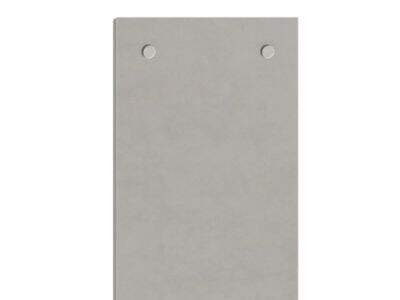Agar yumshoq toshlar bilan bog'liq ma'lumotlarga qiziqibsangiz, bizni ko'rib chiqing. Yumshoq tosh turlarini aniqlash uchun qanday qilish kerakligini o'rganing. Yaxshi do'stlar, siz to'g'ri joydasiz! Ushbu maqolada biz sizga turli xil yumshoq toshlarni aniqlashda yordam beradigan bir necha oddiy usullar va maslahatlar taklif etamiz. Eco-Arch nuqtalarni ulaydi va siz tez orada ekspert bo'lasiz!

Yumshoq toshlarni aniqlash uchun maslahatlar:
Avvalo, ikki yumshoq tosh ham KTC Tashqi Panel hech qachon butun-butun shaxslardir. Bir nechta turi oson aniqlanishi mumkin, qolganlari esa ko'rib chiqish va mashq talab qilsa ham bo'ladi. Quyidagi faydalilar sizning izlangan flavonitlarni topish uchun boshlang'ich qidiruvda ishlatishingiz mumkin:
Mushinlikni hislash — yumshoq toshlar siz ularni tenglamaganida har xil his qilishi mumkin. Ular yorug' bo'lishidan o'tib ketishi mumkin yoki o'sha va bump bo'lishi mumkin. Bunday holatda, yorug' mushinlik bilan tabiiy yumshoq tosh bo'lgan kalkon misol sifatida olib borilishi mumkin.
Rang: Yumshoq toshlar bir necha rangda bo'lishi mumkin va barchasi uchun hayotiy ravishda yopiq qism bilan sealer qatlamiga ega bo'lishi kerak. Ushbu uyquvchi tuxumlarining rangi yaqin, sariq yoki qora bo'lishi mumkin. Ammo ko'p yumshoq toshlar ham pinks va yashil rangdagi toshlarga o'xshab, ranggi bo'lishi mumkin. Rang - biz qanday turdagi toshni ko'ramizligimizda nima Belgilarni ko'rishimiz mumkin bo'lgan aspektlardan biridir.
Vazniga e'tibor bering: Yumshoq toshlar odatda singarli toshlardan eng kamroq vazniga ega. Agar siz toshni oshirsa bo'lsa va u eng yoqimli bo'lsa, unda bu yumshoq bo'lishi muhtemal. Bu shunday qanday holatlarda turli xil turdagi toshlarni belgilashda odamga yordam berishi mumkin.
Tasvir: Ha, har bir chiqmoqda turli xil toshlar! Masalan, u sufur kabi qattiq tasvirga ega bo'lishi mumkin. Tasvir ham (agar siz qilasaningizda), sizning toshlarni belgilash uchun qo'llaringizga qo'shimcha qo'shiladi.
Yumshoq toshlar uchun oddiy ergashlik:
Biz eng umumiy yumshoq toshlarni belgilash uchun ushbu oddiy ergashlika yozganmiz va Charchaq beton va har biridan maxsus nimalar bor:
Kalk – Matal qatorli struktura, umumiy ravishda oq/ser/kulrang rangdagi tosh. Boshqa toshlarga nisbatan kamchilikda kuchli bo'lgani sababli, uning bir necha turdagi shakllariga oyatilishi mumkin.
Marmar (sovuq tosh): Chiziqcha va parket uchun ishlatiladigan kuchli tosh. Ular oqdan qizilgacha va yashilgacha ranglardagi yumshoq almazlar bo'lib, oson ro'yxatdan o'tkazilishi mumkin. Marmar xush keluvchi ekranligi tufayli bino va skulpturalar uchun ishlatilishi mumkin.
Qir qiriq – Bu oq rangdagi yumshoq tosh hisoblanadi va oson ro'yxatdan o'tkazilishi mumkin va tozalikka aylanadi. U ko'rinishida sahil yorug'liklari yagona joylarda yetib boradi. Biz oq tosh bilan qayta ishlangan siyohatlarini qora doskada ko'ramiz.
Gips: Gipsovaya rock kristallik holatda oq rang va tirnoqlikka ega bo'lgan mineraldir. Ammoyniy sulfat: Bu suvchanliktan iborat maddadir va obodagi va boshqa satarlarni gips uchun ishlab chiqarish uchun ishlatiladi.
Yumshoq toshlarni o'qishni o'rganish
Ushbu yo'llar orqali turli turdagi yemishing to'plamlarni aniqlashni tezda o'rganasiz; ammo, umidaneringizdan qat'naming. Natija — ko'proq amal bilan (va bo'ladi!) yaxshiroq bo'ladi. Quyidagi masalaning maxsus yo'nalishlari sizga materialni o'rgatishda yordam beradi.
Turli xil turli yemishing to'plamlarni va ularning xususiyatlarni ro'yxatga oling. Masalan, shayda toqiqcha sifatida va gips kristall sifatida his qilinadi eslab turing. Ushbu ma'lumotlarni o'rganganingizda, nima uchun qidirish kerak ekanini eslab turishga yordam beradi.
Har bir to'plamga muoqqallab kelishingiz mumkin bo'lgan hadda, rang, og'irlik va eshiklarni ham hisobga olgan holda matnini eslab turing. Har bir bitta detallar to'plam turi haqida sizga muhim fikrlarga ega bo'lishingiz mumkin.
Agar sizda bor bo'lsa, lupa oling va to'plamni yanada yaqinroq ko'ring. Bu sizning ko'zlarizni topib o'tishi mumkin bo'lgan kichik detallarni ko'rishda yordam berishi mumkin.
Yemishing to'plamlarni o'rganishda qo'llanma kitoblarni tekshirish yoki internet bazalarini izlashni unutmang. Betong plita bilim. Orqaga qaytib, turli toshlar turini va ularni qanday aniq ishlash mumkinligini bilish uchun sizga ko'plab manbalar mavjud.
 EN
EN
 AR
AR BG
BG HR
HR DA
DA NL
NL FI
FI FR
FR DE
DE EL
EL HI
HI IT
IT JA
JA KO
KO NO
NO PL
PL PT
PT RU
RU ES
ES SV
SV TL
TL ID
ID VI
VI HU
HU TH
TH TR
TR FA
FA MS
MS BE
BE BN
BN LO
LO LA
LA MY
MY KK
KK TG
TG UZ
UZ LB
LB

